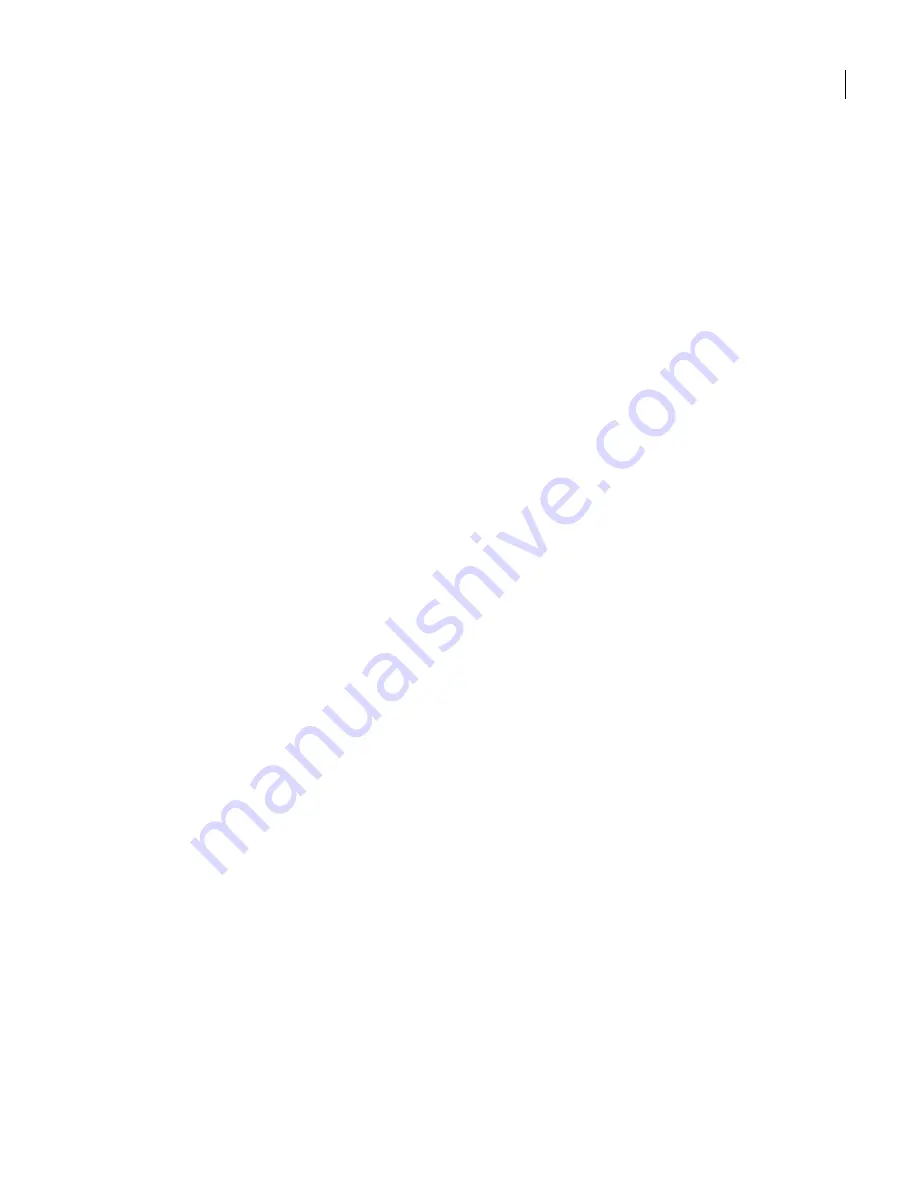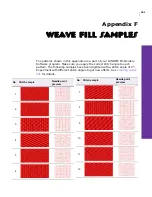
JANOME Embroidery Software Instruction Book
Glossary
295
Trimming: Action of cutting loose
thread, removing backing, etc,
from the final embroidered
product.
TrueType Font: Digital font
technology designed by Apple
Computer and now used by both
Apple and Microsoft in their
operating systems.
Turning Angle Fill objects: The
Turning Angle Fill tools create
columns of varying width with
turning stitches. Different effects
can be applied to these objects.
Collectively they are known as
Turning Angle Fill objects.
Turning stitches: Embroidery
objects can be filled with parallel or
turning stitching. Turning stitches
are columns of stitches which turn
to follow the path defined by the
object outline. By contrast, parallel
stitching traverses the shape in one
direction only – e.g. at 90° to the
horizontal, 45°, or whatever is set.
Objects can be created with turning
stitching already applying, or
multiple stitch angles can be added
later. Turning stitches are best
used with designs containing
complicated, turning shapes such
as trees, animals, or large filled
areas. Turns generally occur at
points where a shape changes
significantly in direction or width.
Underlay: Stitches sewn before
other design elements to help
stabilize fabrics. The stitching
action that will attach the backing
to the fabric being embroidered. It
also supports the top embroidery
for a more lofty, dimensional look.
Underlay stitches are made up of a
series of single run stitches, usually
with a very short stitch length, and
are digitized manually or placed
automatically under the column
(satin) or fill stitch areas of your
embroidery design.
Visualizer: Visualizer provides
you with a preview of how your
embroidery will look when stitched
out. It gives the screen image a
three dimensional look.
TWAIN: Industry standard which
allows devices (such as scanners)
to communicate directly with
design and layout programs. Both
device and program must be
TWAIN-compliant. This lets you
use any TWAIN-compliant scanner
with your software.
Underlay: Stitches sewn before
other design elements to help
stabilize fabrics. The stitching
action that will attach the backing
to the fabric being embroidered. It
also supports the top embroidery
for a more lofty, dimensional look.
Underlay stitches are made up of a
series of single run stitches, usually
with a very short stitch length, and
are digitized manually or placed
automatically under the column
(satin) or fill stitch areas of your
embroidery design.
Values: The actual settings –
letters and numbers – that you
enter into dialogs. See also
Object
Properties
.
Variable sizing: Ability to scale a
design to different sizes.
Vector graphic: Unlike raster
images, vector graphics contain
vector data. This is a collection of
geometric shapes and lines that
combine to make an image. Rather
than pixels, such data is recorded
as a set of mathematical formulas.
Vector graphics are scalable
without distortion, and are small
files. See also
Bitmap image
.
Visualizer: Visualizer provides
you with a preview of how your
embroidery will look when stitched
out. It gives the screen image a
three dimensional look.
Weight: When referring to
T-shirts, the three standard weight
divisions are mid-weight/value,
heavyweight/premium, and super
heavyweight.
Write: To send design information
to an embroidery disk, design card
or embroidery machine for
immediate stitchout or storage.
X/Y coordinates: The horizontal
(X) and vertical (Y) distances on a
graph or computer screen. Use X
values to measure width, and Y
values to measure height.
Zoom factor: The scale at which
the design is currently displayed.
Summary of Contents for Digitizer MB
Page 236: ...234 Part IX Software Feature Table...










































